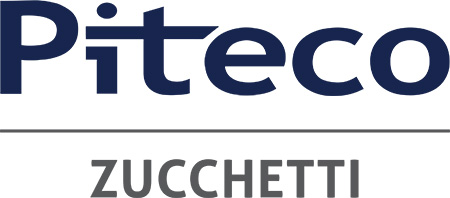The digitalisation process of Save’s Treasury operations dates back to the beginning of the 2000s and finds in Piteco’s solutions the optimisation engine that over the years has supported the virtuous path of Save’s Finance division towards the implementation of a short, medium and long term Financial Planning project, starting from the optimisation of operational Treasury.
Start up of Treasury Operations
The integration of the Piteco Treasury solution with the Sap management system has allowed real-time access to financial data, safely governing its transformation into a financial key; the centralisation in Treasury of relations with banking institutions has allowed and still allows the analysis and constant monitoring of banking conditions.
The management within the Piteco tool of operations and processes related to the asset cycle proved to be an immediate priority, particularly with reference to the reconciliation of receipts of different types and from different channels – physical and online – generated not only by the airports of Venice, Verona, Treviso and Brescia, but also by the company Marco Polo Park, which manages airport car parks for the Group.
Parallel to the active cycle, optimising the channelling of payments was one of the pillars of the start-up of the digitalisation of the Treasury. The centralisation of information in the Piteco tool has not only allowed greater control over cash flows and the reduction of errors, but has also enabled the company to benefit from the security guaranteed by Piteco in the management of payment processes and the sending of instructions to banks, thus protecting the company from fraud.
The traceability and immediate access to data relating to payments to suppliers – including those relating to CIGs (Tender Identification Codes) and CUPs (Unique Project Code) that univocally associate a payment to a specific tender – proved extremely useful for Save’s Treasury Division during inspections and tax audits, for the production of the necessary documentation.
At Piteco we have a 20-year database for everything related to payments to suppliers: an extremely important database.”
Flora Ruaro
Treasury & Credit Manager
Save Group
Centralised treasury and debt management
The implementation of a Cash Pooling structure was Save’s choice to optimise the Treasury of 10 of the companies that make up the Group: through this form of centralisation, it is possible to offset the debtor and creditor positions of the various companies, optimising the use of available liquidity at Group level, managing the entire cash cost chain.
The management of IFRS 16 – the international accounting standard governing the accounting of leasing contracts for companies applying IAS standards – within a dedicated treasury solution also offered Save several advantages, allowing the complete coverage of individual contracts, the calculation of the contract value through the discounting of future cash flows for the Liability and ROU recognition, the generation of accounting entries for the reversal of the rental fee and amortisation recognition, the management of rental variation or early extinction, and the production of dedicated reporting in compliance with accounting regulations and the separation of access between Treasury and Accounting. In addition, even for companies that do not apply the standard but which must be recognised at the consolidated level, it was possible to manage all the entries and calculations resulting from the application of the IFRS, completely eliminating management in Excel and the associated risks of error.
As far as debt management is concerned, the Save Group has obtained great benefits from the Piteco functions dedicated to the management of mortgages: the use of the Treasury tool makes it possible to quickly and correctly perform the calculation of amortised cost, obtain the projection of charges and financial flows with the consequent automatic integration of data in the Financial Planning suite, allowing a more precise control over cash flows and corporate debt.
The use of the hedging instrument management functionalities also allows the accounting – MTM and differential adjustment – and planning management of hedging derivative contracts as well.
Preventive Treasury
Being able to count on a solid Treasury management and reliable, up-to-date data has allowed Save to focus on the consolidation of a preventive Treasury, with a strategic role in the management of the financial value chain, and on the implementation of a Financial Planning, a tool of primary interest, especially for corporate management.
“It appeared increasingly strategic to forecast the evolution of short-, medium- and long-term financial requirements and to identify possible hedges. We do not only want to manage cash, we want to focus on the financial budget, the development of different scenarios, the charges and income from these, the deviations from the budget and subsequent forecasts, and the analysis of these deviations.”
Planning is strongly interrelated with the other treasury management processes and acts as a collector and normaliser of all available forecast and actual information. It provides tools that can be used in the Treasury manoeuvre, detecting deviations from forecast data in order to progressively refine forecasts, calculate charges and income related to the various hypothesised scenarios – to be subsequently provided to management control for economic budgets -, develop scenarios on an individual company or consolidated level, and manage in advance compliance with financial covenants related to specific contracts and loans.


